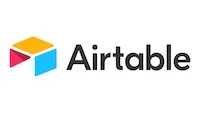Everything You Need to Know about Building an App without Code

So, you’ve got a great app idea, but you’re no coding wizard. Don’t worry; you’re not alone. Not all of us were blessed with the mystical powers of coding. But that doesn’t mean you can’t bring your app idea to life. Enter no-code app development– the hero we need but don’t deserve.

Umm, yes, we do!
(And even if you do know your way around Java, Python, and the common culprits - sometimes the traditional development time is just not worth it.)
With no-code tools, you can create apps that look and function like they were developed by a team of coding ninjas. And the best part? You don’t need to write a single line of code.
In this article, we’ll cover everything you need to know about building an app without code, from understanding no-code platforms to launching and promoting your app.
1. Understanding No-Code App Development Platforms
If you’re not a coder but want to build an app, no-code app development platforms can be a lifesaver. These platforms allow you to create apps without any coding skills, using a visual interface to design your app’s layout and functionality.
Here’s what you need to know about no-code app development platforms:
Types of No-Code Platforms
No-code platforms generally come in three different flavors:
- Web: These let you create web-based applications. You likely use these every day– think programs and sites like Facebook, Gmail, or an e-commerce shop.
- Mobile: You guessed it! Mobile no-code platforms let you develop apps for Android and iOS.
- Database: These platforms allow you to create and manage robust databases for your business needs. For example, you could create a chatbot conversation database, a CRM, and more.
Popular No-Code Platforms
Here are some examples of some of the most used platforms for building apps from scratch:
Bubble
![]()
Bubble enables users to create robust web applications using a drag-and-drop interface. With its built-in database and integrations with popular services like Zapier and Stripe, Bubble makes it easy to manage data and design custom workflows and layouts.
Softr

Softr offers a user-friendly interface for creating web applications, landing pages, and websites. Its powerful database functionality and customizable layouts make it easy to manage app data and design engaging user experiences.
It also includes an analytics dashboard for tracking user behavior and app performance and integrates with popular tools like Zapier and Google Sheets.
Sheet Best
When your entire team lives in a spreadsheet, you don’t have to reinvent the wheel. Simply turn your spreadsheet into a REST API with Sheet Best, and plug it into any front end you prefer!
From automating your business processes and excelling at customer service to automating chatbots, Sheet Best has helped thousands of business owners build powerful apps without writing a single line of code.
The best part? Sheet Best starts from $9.99/month!
Learn more about all the different ways you can use Sheet Best.
Appy Pie

Appy Pie allows users to create custom iOS and Android apps with ease using a drag-and-drop interface, so it’s a breeze to design custom layouts and user experiences.
The platform also allows you to submit your app to the app store!
Airtable

Airtable provides a user-friendly interface for creating and managing databases with powerful filtering, sorting, and collaboration features. It’s the ideal platform for teams looking to analyze and work together on data records, manage projects, and more.
Google Appsheet

Google’s Appsheet lets you create both mobile and web apps based on data sources like spreadsheets and databases. With customizable templates, intuitive layout design, and integrations with Google services, AppSheet makes building and customizing app functionality a breeze. We also like it because it offers built-in data security features and user authentication, and integrates with plenty of apps.
Of course, there are plenty of other platforms you can use, but this is a great starting point if you want to build a mobile app, website, or anything in between!
2. Getting Started with Building Your No-Code App
So, you’re ready to build your own app but don’t know where to start? No worries, we’ve got you covered. Here are the key steps to get you started:
Defining Your App’s Purpose and Audience
Before anything else, you need to have a clear understanding of its purpose and who your target audience is.
Ask yourself, “What problem does my app solve?” and “Who will benefit from using it?”
This will help you stay focused on your app’s core purpose and ensure that you’re building something that your audience will actually want to use, whether that’s your HR team or your customers.
Identifying the Features and Functionality You Need
Once you know what your app is going to do and who it’s for, it’s time to identify the features and functionality you’ll need to include.
This can be a daunting task, but breaking it down into smaller, more manageable steps can help.
Here are some questions you need to ask to get you there:
- What are the core features that my app needs to have?
- Are there any additional features that would make my app stand out?
- Do I need to integrate any third-party services or APIs?
- How will users interact with my app?
- What user data will I need to collect?
By answering these questions, you’ll have a better idea of what features and functionality your app should have.
For example, CHWIC, Sheet Best customers, started by outlining the key tasks they wanted to solve with their no-code app.
Create a Project Plan and Timeline
Now it’s time to start coming up with a plan of attack.
This will help you stay organized and ensure that you’re making progress toward your goals. For example, you might create tasks for wireframing, design, development, testing, and deployment.
Once you’ve created your list of tasks, assign them to specific dates and set deadlines. That way, you have a guide for where you want to be and how you’re going to get to the finish line.
Wireframing & Prototyping
Now that you have a clear understanding of your app’s purpose, audience, and required features, it’s time to create a wireframe or prototype. This will help you visualize your app’s user interface and ensure that your app’s design is aligned with your goals.
A wireframe is a simple, black-and-white sketch of your app’s user interface. It doesn’t need to be detailed, but it should give you a sense of how your app will look and feel.
A prototype, on the other hand, is a more detailed version of your app that includes interactive elements. You can create a prototype using no-code tools like Bubble.
The benefit of a wireframe or prototype is that it will help you identify any potential design issues early on and ensure that your app is user-friendly and intuitive– without getting too far into development and having to start from scratch all over again.
Of course, if you’re designing a very simple no-code app for a startup MVP or for a two-step automation process, you don’t need a prototype. You can simply create a wireframe or a diagram showing what happens when.
3. Designing Your App
Now that you’ve picked your platform, let’s dive into the fun part– designing your app!
The goal is to have an app that’s easy on the eyes and user-friendly. That way, users don’t lose interest and move on to somewhere else.
Here are some simple steps to follow so you create an app that’s visually appealing and keeps users engaged:
Choosing a Theme and Customizing It
Many no-code platforms offer pre-designed themes and templates to get you started quickly. These themes can range from simple designs to more complex ones, and they can be customized to suit your brand and personal style.
The next step is getting in deep and customizing the theme to make the app unique to your business.
This usually involves changing colors, fonts, and images to reflect your brand’s visual identity. Some platforms offer easy-to-use customization tools, such as a color picker and font library, to make the process smoother.
Take your time to make sure your theme looks cohesive.
Designing the Layout and User Interface
Once you’ve picked your theme, it’s time to start designing your app’s layout and user interface.
A good user interface should be intuitive, simple, and easy to navigate. It’s important to think about how your users will interact with your app. The last thing you want is people getting frustrated and not finding what they’re looking for.
Make sure that the design is consistent across all pages of the app. This will create a sense of familiarity throughout the app and make it easier for users to use your app.
As Oleg Stirbu of Conversion Design says:
“Use common UX patterns. No need to reinvent the wheel here — if you make people think, you lose them.”
Oleg stirbu
Adding Branding Elements
Adding branding elements like your logo and icon can make your app more recognizable and memorable. Use your brand colors and imagery sparingly to enhance the user experience.
Avoid overdoing it with too much branding that can distract from the app’s main purpose.
Your app’s logo and icon should be easily identifiable and stand out. Use high-quality images that are optimized for different screen sizes to ensure that they look great on any device.
Also, keep in mind how your branding elements will be displayed across different pages of the app, such as on the app’s home screen or in the navigation menu.
4. Developing Your No-Code App’s Functionality
Now that you’ve created a beautiful design for your app, it’s time to start adding features and functionality to make it stand out!
Adding Features and Functionality Using No-Code Tools
No-code app development platforms come with a variety of built-in tools that make it easy to add features and functionality to your app without writing a single line of code.
For instance, you can add things like:
- User authentication and authorization
- In-app messaging and notifications
- Payment processing and subscriptions
- Database integration and management
- Inventory management
- Form creation and submission
- Knowledge bases
- Geolocation and mapping services
- Social media integration
- Chatbots
- Machine learning and AI-powered features
- Workflow automation
- Data visualization and reporting tools
And that’s just to name a few!
Integrating APIs and Third-Party Services
APIs are basically a set of instructions that allow different software applications to communicate with each other.
This means you can use APIs to integrate your app with services like Google Maps, PayPal, and social media platforms.
And if you really want to power up your app with the data you have on hand, try Sheet Best to turn spreadsheets into REST APIs. That way, you can easily add and update data in your app without having to manually update the spreadsheet.
Creating Data Models and Workflows for No-Code App Development
To build a functional app, you’ll need to create data models and workflows that define how your app will work. Data models define the structure of your app’s data, while workflows define the steps that users will take to interact with that data.
Most no-code app development platforms have tools that make it easy to create data models and workflows without writing code. For example, Airtable lets you create custom databases with fields for text, numbers, attachments, and more.
You can then create workflows using Airtable’s built-in automation features, like triggers and actions, to automate tasks and streamline your app’s functionality.
Testing and Refining Your App
Once you’ve added features and functionality to your app, it’s time to start testing and refining it. No-code app development platforms make it easy to test your app in real-time, so you can quickly identify and fix any bugs or usability issues.
Using the built-in testing features that come with no-code tools, you can preview your app on different devices and in different scenarios.
Wrapping Up: Are You Ready to Not Code?
Congratulations! From the initial brainstorming phase to a fully fleshed-out and developed app, you now have all the knowledge and resources you need to build an app without a single line of code. With the help of no-code tools and APIs, you can turn your app ideas into reality quickly and easily.
So what are you waiting for? Get out there and turn your dream app into a reality!
And if you’re looking to supercharge your old-fashioned spreadsheets and transform them into a usable app, look no further than Sheet Best that lets you turn them into REST APIs.
Sign up today and experience the magic for yourself!
